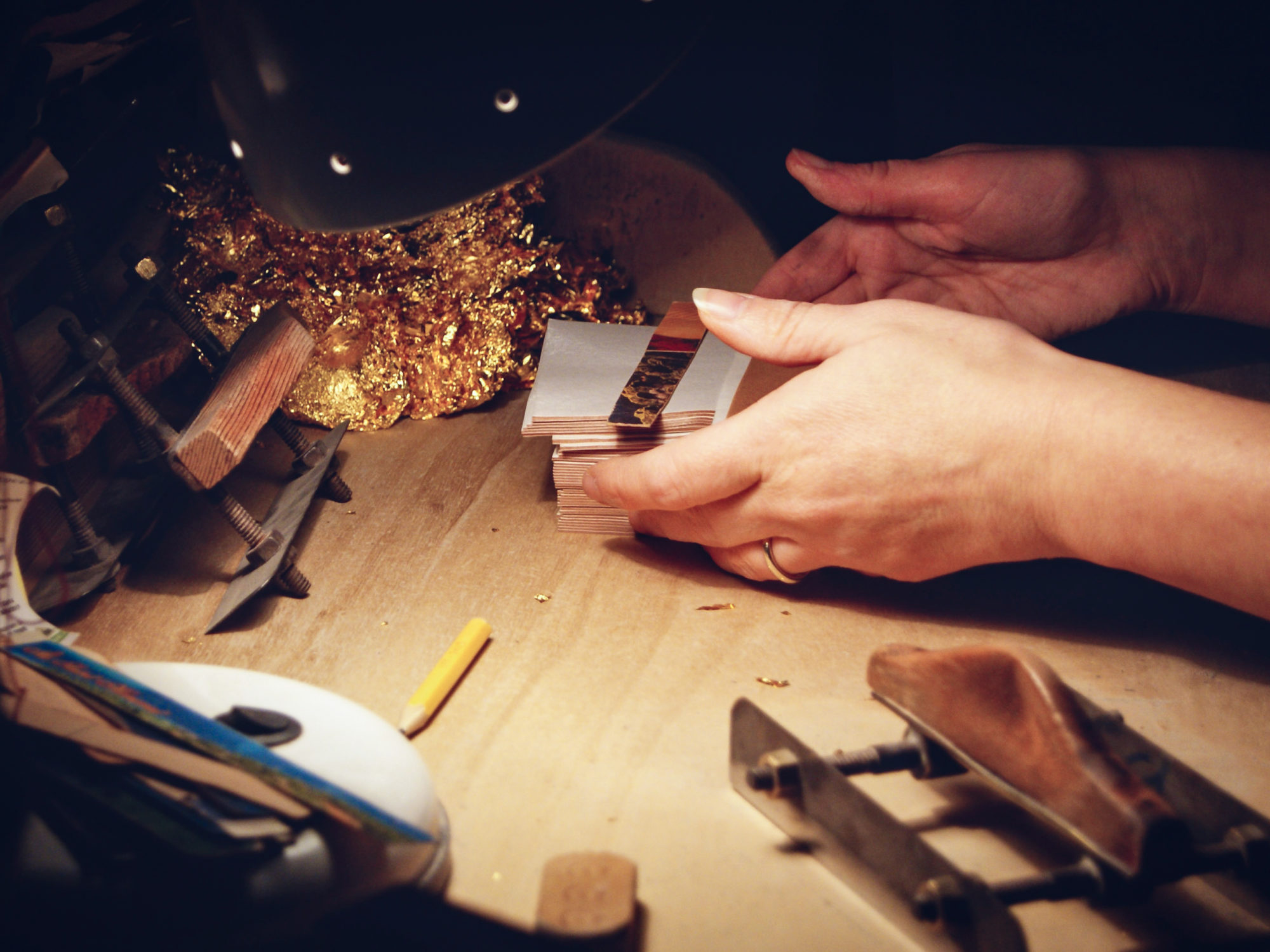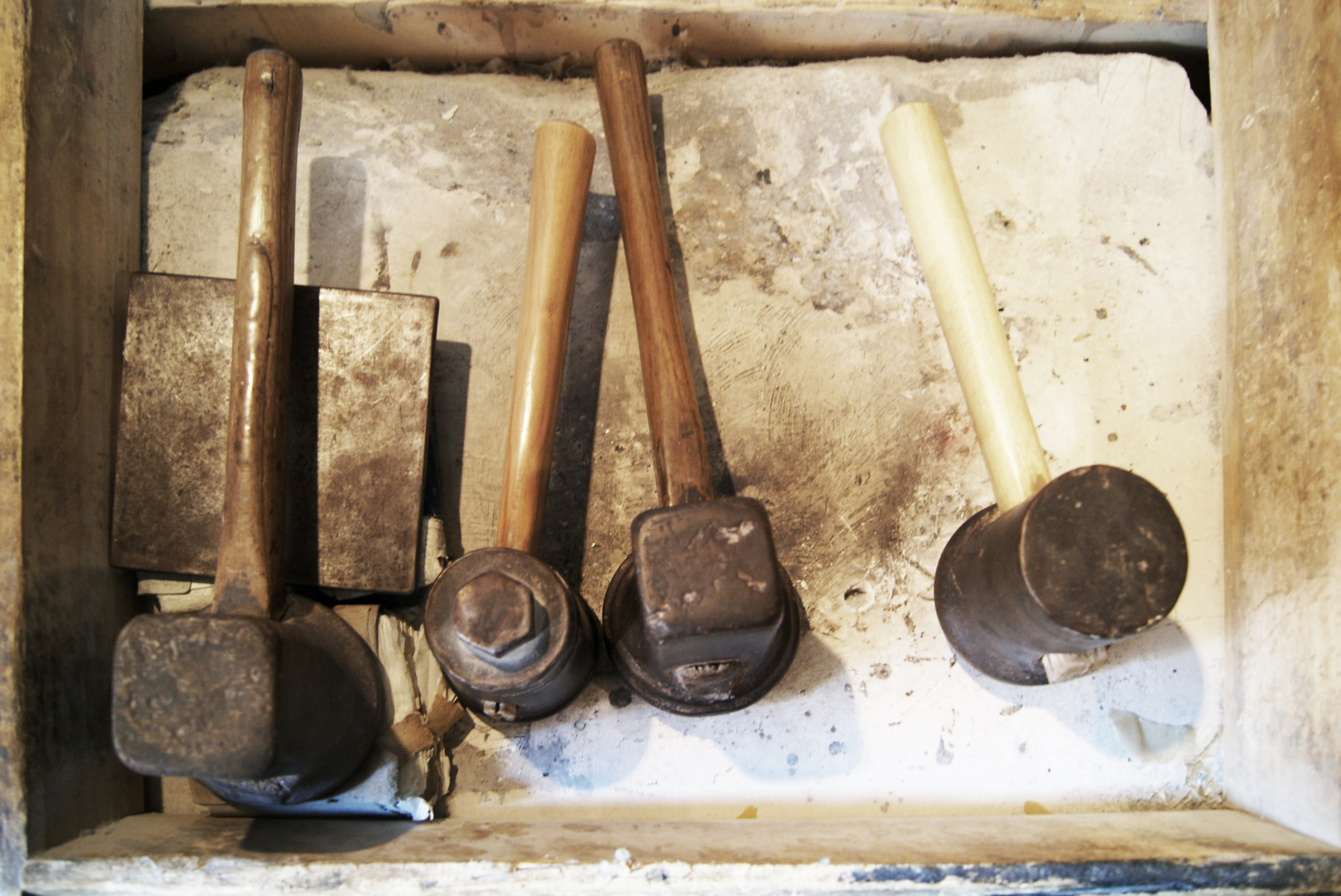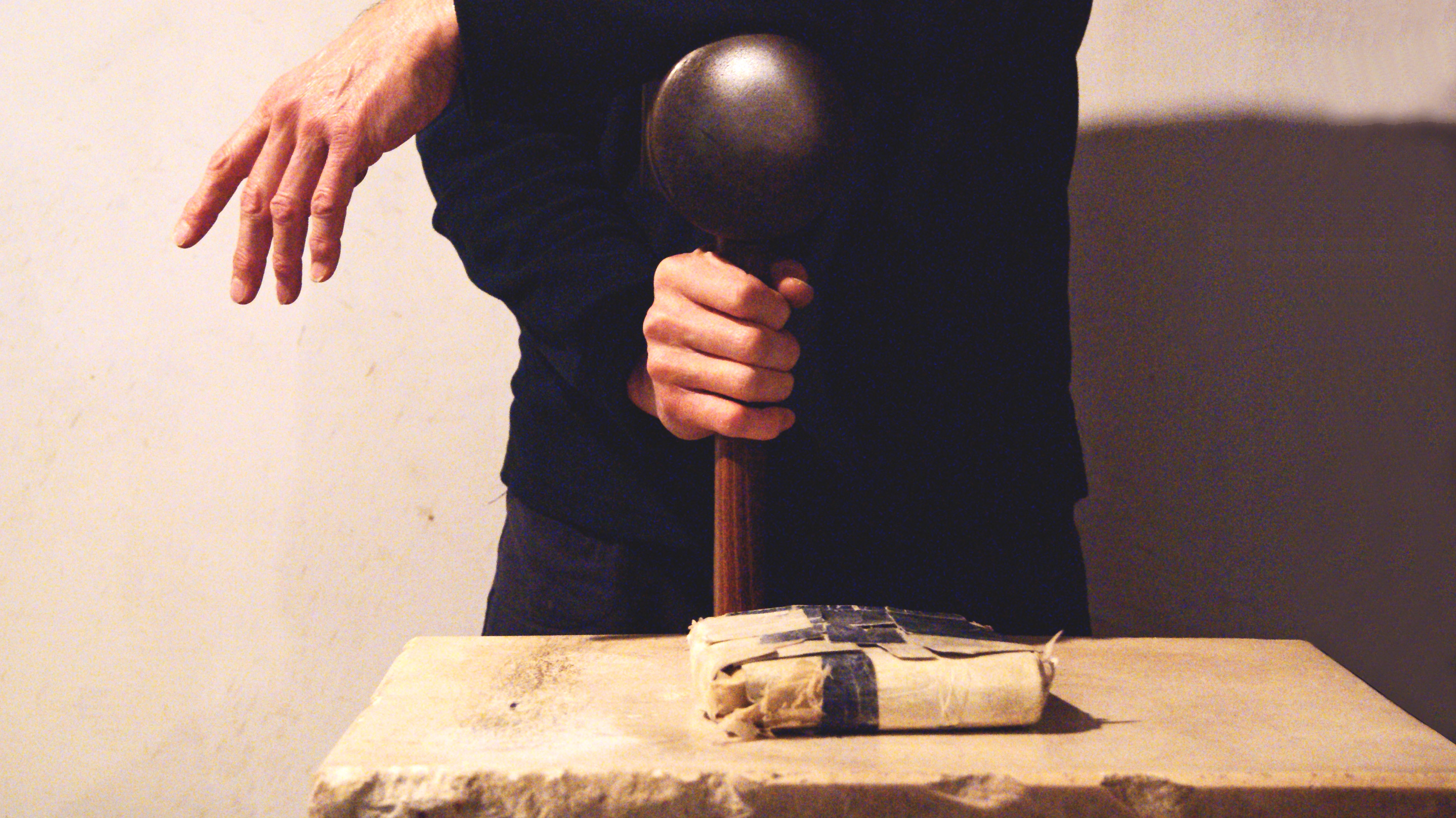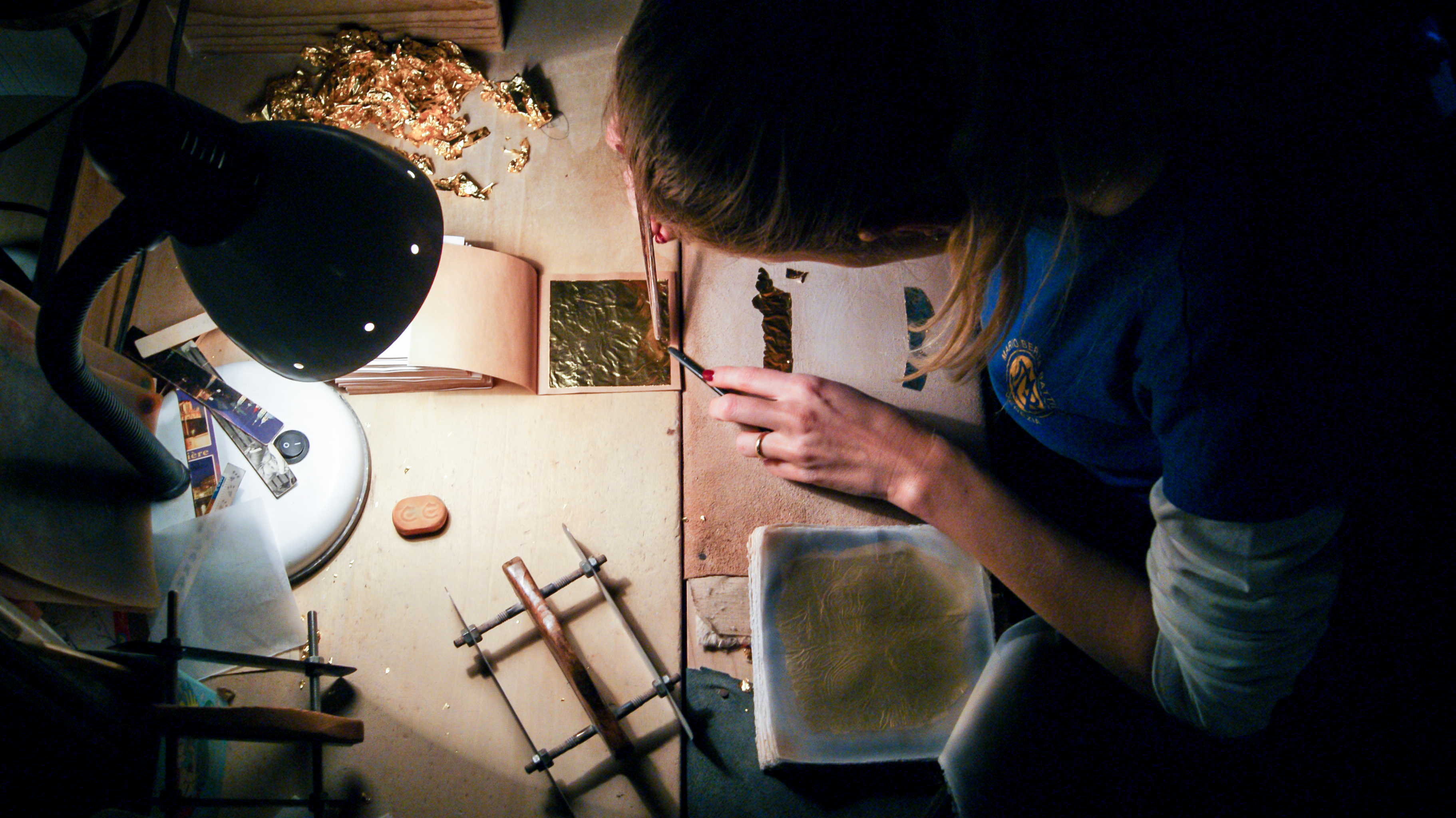Post by Italian Stories | from our book MANI
Marino Menegazzo, goldbeater – Venice
ph Evelyn Leveghi
I always get excited when I open the door to my workshop. Maybe because it is located in Cannaregio, one of the most beautiful districts of Venice, or because every morning I walk through a maze of streets, squares and hidden gardens to get there.
What also excites me is thinking that Tiziano Vecellio lived in the same small rooms I work in. And that, in 2016, the workshop celebrated its ninetieth anniversary.
The workshop in which I make gold leaf by hand has remained the same since 1926, when it was founded by the family of my father in law, Mario Berta. I learned the trade from him. I was a little more than twenty years old and, under his guidance, I learned to turn gold, silver and other precious metals into thin leaves for artistic decoration, but also for cosmetic and culinary purposes.
I am the only “battiloro” (goldbeater) in Italy, and perhaps in Europe, that still beats the gold leaf by hand. The only “machine” in the workshop is the mallet, operative since 1926 in transforming gold blocks into thin oval sheets, ready to be beaten with a hammer. I then beat it with differently weighted hammers, thousands of times. How many exactly? I cannot tell you, it’s a secret.
When I see the gold leaf, so delicate, widen and take a new shape I always feel great satisfaction. The finished leaves are then cut into eight centimeter squares but you cannot touch them! To work them you need tools such as the “canino”, a bamboo clamp, and the “carrello”, a tool made of iron blades mounted on a wooden handle. The actual cutting of the gold leaf is reserved exclusively for the “tagliaoro” (gold cutters). They are women, because they have a gentleness and delicacy in handling very thin leaves that no man will ever have.
I am proud to know that, in my city, the gold leaf that comes from our workshop dresses the angel on top of St. Mark’s bell-tower, as well as the giant sphere that decorates Punta della Dogana. These are Venice’s symbols, but they are just a few of the countless works that sparkle thanks to the work we do in this workshop.
My job turns the fragile side of the precious materials into art, and it is an honor to be among the last supporters of this ancient craft tradition. An honor as well as a responsibility.
Read the story of Marino on our website, and book your experience.



